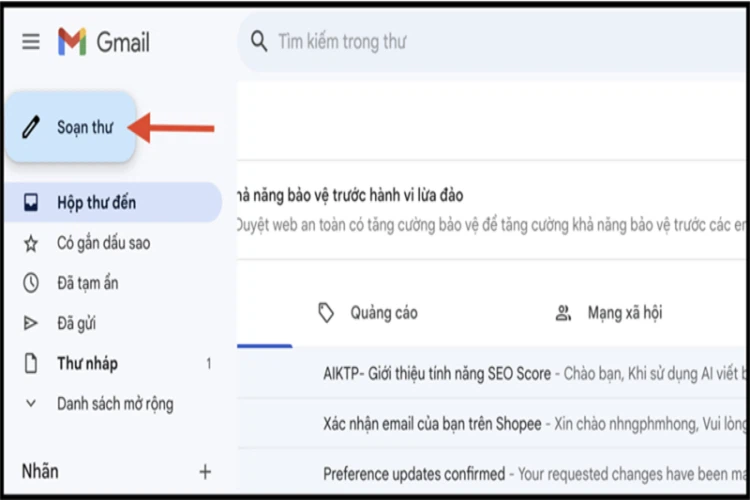Bamboo shoots are a popular ingredient in many Vietnamese dishes, such as sour soup, spare ribs, bun bung, and fish soup. However, despite their popularity, some people hesitate to cook with them due to past experiences of mouth and throat irritation. The preparation process can be even more daunting as direct contact with the shoots may cause skin irritation. Thus, it is essential to know how to minimize skin irritation when handling bamboo shoots.
**Rinse bamboo shoots with this solution to prevent skin irritation**
The simplest way to avoid skin irritation when preparing bamboo shoots is to wear rubber gloves to minimize contact with the irritant present in this plant. However, if gloves are unavailable or uncomfortable, rinsing the shoots with saltwater can be an effective alternative to prevent skin irritation.

*Some tips to help reduce skin irritation when preparing bamboo shoots. (Shutterstock)*
Here’s a step-by-step guide: First, wash the bamboo shoots to remove any dirt or debris. Then, peel off the tough outer layer, similar to peeling a banana. Using a knife, remove the curved inner portion of the shoot and cut it into bite-sized pieces. It is recommended to cut the shoots diagonally to make them easier to squeeze and absorb flavors.
Sprinkle a spoonful of salt over the cut bamboo shoots and mix well. Let the shoots sit for about 15 minutes. This step helps reduce irritation and ensures even absorption of flavors. Next, add water to the container with the shoots, gently squeeze them, and then lightly squeeze out the excess water.
Bring a pot of water to a boil and blanch the cleaned bamboo shoots for a few minutes to eliminate bacteria and the irritant. Finally, soak the shoots in a strong saltwater solution once more, followed by several rinses in cold water. At this point, the bamboo shoots should no longer cause any irritation.
In addition to salt, vinegar can also be used to clean bamboo shoots without causing skin irritation.
To minimize direct contact with the bamboo shoots, you can rinse them under running water.
**Ways to alleviate skin irritation caused by bamboo shoots**
If you experience skin irritation from handling bamboo shoots, the following remedies can provide relief:
– Milk application: If your hands feel itchy after touching bamboo shoots, pour some fresh milk on your hands and rub it in. Milk can quickly soothe itchy and uncomfortable sensations.
– Sugar scrub: Pour a small amount of sugar into your hands and gently scrub until the sugar dissolves. Rinse your hands with clean water to eliminate the itchy feeling.
– Heat application: When the itch becomes unbearable, try holding your hands over a flame or heating a towel and gently rubbing it on your hands. The heat helps alleviate the itchy and uncomfortable sensation.
– Warm water: If you experience mouth irritation after consuming bamboo shoots, drink warm water to soothe the irritation.
– Ginger saltwater gargle: Crush a piece of fresh ginger and add it to diluted saltwater. Use this solution as a mouthwash.
If the irritation persists or becomes severe, consult a doctor for medical advice.
**How to distinguish bamboo shoots from taro stems**
Bamboo shoots and taro stems have a similar appearance, so it is crucial to observe them carefully to identify their differences. Inexperienced buyers may mistakenly purchase taro stems, which can cause not only mouth irritation but also burning sensations, excessive salivation, tongue stiffness, and throat irritation.

*Bamboo shoots and taro stems share similar physical characteristics. (Lao Dong Newspaper)*
To ensure you select bamboo shoots, keep the following in mind:
Bamboo shoots typically have a softer appearance and a yellowish hue, while taro stems look tougher and are harder to bend, with a darker green color.
Bamboo shoots are usually smaller in size compared to taro stems. Taro stem leaves are shield-shaped, with a very narrow fusion point between the two basal lobes. The taro stem’s petiole is often thick and stout, a distinctive feature for identification.
If you’re unsure, cut a small portion of the stem and smell it. Bamboo shoots generally have no distinct odor, whereas taro stems may emit an unpleasant odor.
Taro stems contain a toxic substance called sapotoxin, which can cause adverse effects such as burning sensations in the mouth and tongue, jaw stiffness, and respiratory issues.
To avoid any risks, inspect the plant carefully and ensure you do not confuse taro stems with bamboo shoots. Refrain from direct contact with taro stems.

































